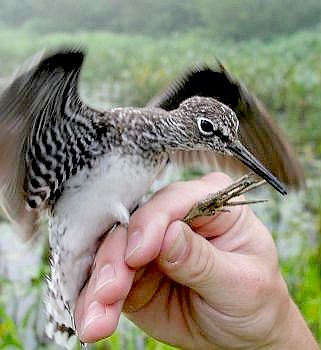

For a brief week or two during late July and early August at Powdermill (where Louisianas, but not Northerns, nest), we can expect to encounter both species of waterthrushes--earlier migrating individuals of the later migrating Northern Waterthrush and later migrating individuals of the earlier migrating Louisiana Waterthrush. In taking comparative photos of the two species this week, we may have hit on a new pose for birds-in-the-hand. Both waterthrushes were being rather uncooperative when held in the conventional "photographer's grip," but were strangely calm when placed on their sides in the palm of the photographer's hand! Both allowed several frames to be shot before "realizing" that they were free to fly away!
Several of the diagnostic field marks for separating the two species are clearly visible: the LOWA (below left) has bright pink legs and feet, compared to dusky pink in the NOWA (below right); the LOWA has whiter, less heavily streaked underparts, with contrasting buffy flanks and undertail coverts, compared to the NOWA, whose underparts are generally yellower and more uniform in color, with heavier streaking (the streaks falling more distinctly into rows); the supercillium (line above the eye) of the LOWA is whiter and its white throat is usually unstreaked (the LOWA below, however, had light streakings on its throat), while the NOWA has a darker yellowish supercillium and, usually, a streaked throat (the NOWA pictured, however, actually had very few chin streaks); the LOWA has a broader and whiter arc under its eye than the NOWA; lastly, the LOWA has light, unpatterned undertail coverts, while the NOWA has distinct dark bases to those feathers.
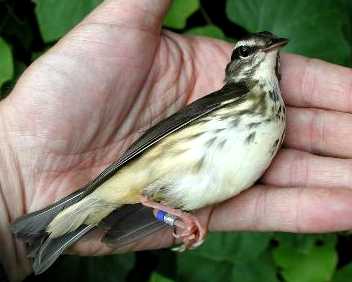
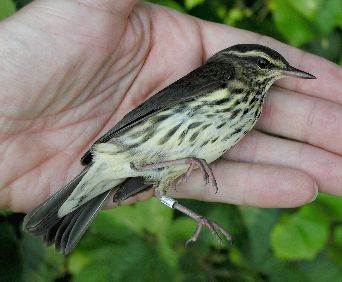
Finally, we banded over
20 juvenile Melospiza (Song
and Swamp)
sparrows
this week. The two species are notoriously difficult to separate
when they are in this plumage, even in the hand, so folks who encounter
relatively few Swamp Sparrow
juveniles may find the following pictures helpful. In both picture
sets, the SOSP
is on the left. It has a proportionately thicker bill, a wider, more
distinct malar streak (the whisker mark extending back from the corner
of the beak), heavier chest streaking, and, usually, a distinct light median
crown streak, absent in the SWSP.
Also, SOSP are
larger, on average, than SWSPs
and have heavier legs--at Powdermill, they receive a larger band size (1B)
than SWSP (size
1).
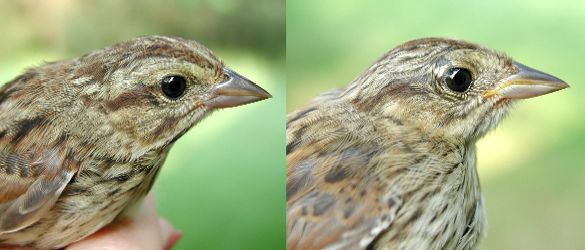
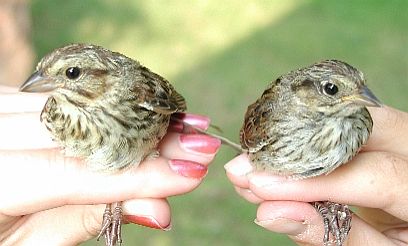
GO TO>> PAST PICTORIAL HIGHLIGHTS
<BACK TO FALL WEEKLY TOTALS